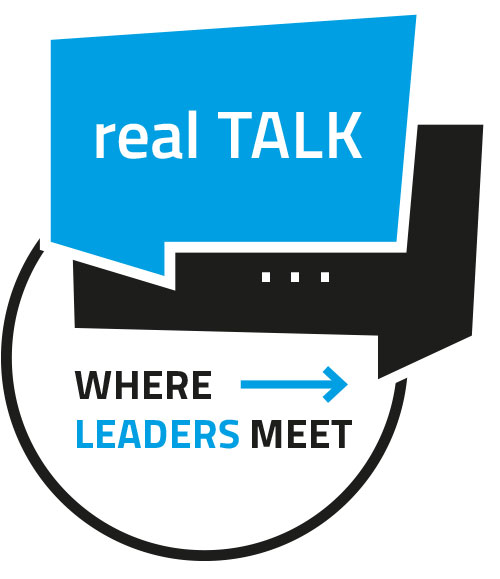real General Contracting GmbH literally lives and breathes work-life balance. We consider the best possible interplay between professional involvement and flexible private options to be a true win-win relationship. From company pension schemes to company car options and flexible working hours to extensive home office offerings, we have everything an employee’s heart could desire. But what exactly is work-life balance, what are the objective advantages and disadvantages, and how will the increasingly flexible dynamics of life and work continue to develop? Our article deciphers answers.
What it is actually about
The term work-life balance refers to the desired balance between private life and everyday working life. Both aspects must be in a balanced, harmonious harmony. As employees naturally live a personal, professional and financial reality, work-life balance can become a challenge. Especially when children are involved. A work-life balance reduces employee stress and ultimately leads to greater motivation. This results in better performance, productivity and well-being. Today, according to studies, many employees suffer from increasing pressure to perform. To achieve a healthy work-life balance, resources must be created. For many employees, it is difficult to autonomously find the right dose. The use of the Internet and social media also results in many time guzzlers in addition to the many opportunities that digitalization brings. Particularly with classic work-life balance models, it is important to switch off after work and be able to indulge in private life. Since the boundaries between work and private life are becoming increasingly blurred, employers in particular need to create framework conditions, but ultimately employers and employees should be able to influence this through dialog.
See real insights and guiding principles of the real Group here
Employer brand and motivators
Many companies today are suffering from a shortage of skilled workers. In the competition for the best workers, which has increased in this way, the concept of employer brand comes into play. If you want to find new people, you would do well to create framework conditions that serve this goal. In addition to the issue of young talent, the same applies internally: Employees are often forced to work longer hours and increased overtime due to too small teams. As a result, they are often stressed, and employers would do well to take responsibility for reducing that stress. This goal is to be achieved through measures that have a lasting and positive effect on employee motivation, employee retention and staff recruitment. Keyword employer brand: For example, training courses in the area of time management are offered in order to prevent employees from being overtaxed. Attention is also paid to the health of employees in order to achieve higher work performance without increasing sick leave at the same time. The goal of a healthy and harmonious working environment can be achieved through appropriate measures and offers:
- Job Enlargement
- Job enrichment
- Flexitime
- Fitness offers
By intelligently balancing work and private life, companies aim to make themselves more attractive and increase employee loyalty. This is particularly attractive to young professionals. For the so-called Generation Z, work-life balance is said to be one of the most important criteria when choosing a career. Studies suggest that a large proportion attaches great importance to a subjectively optimal work-life balance. Due to the constant competition for young talent, it is often all the more important for companies to design their offerings around the topic of work-life balance in the best possible way.
real Group – we are hiring! Please note our current vacancies.
Benefits for employees and the company
With a work-life balance, employees are in a generally better state of health due to significantly lower stress levels. This leads to a more positive attitude and approach to life and work. But it’s not just employees who benefit from a healthy work-life balance. A good balance also holds lasting benefits for the employer. Employees who enjoy coming to work are more motivated and work more productively. At the same time, greater employee satisfaction also leads to stronger employee loyalty. Satisfied employees often stay longer with the company or recommend it to others. Michael Betz, CEO of real General Contracting GmbH, knows that this kind of authentic word-of-mouth advertising is not worth the money. In addition, there are often cost savings due to less absenteeism. Studies show that without a balanced relationship between work and private life, employees fall ill more often and for longer. As a result, companies have to invest many more resources in measures such as company integration management. What the saying goes is also empirically clear: A healthy and harmonious working environment is beneficial for everyone involved.
Do you want to join us? Why not try us out with a speculative application?
 Home office as a field of tension
Home office as a field of tension
The 2020/2021 crisis has, to a certain extent, forced new dynamics to emerge in the world of work. The home office has taken on a new significance, and companies and employees alike have suffered as well as benefited. But what advantages and disadvantages have really emerged? A summary: First of all, there is the lack of commuting. You save time, money and the risks of the classic commute – regardless of how far away you live from the office. The new flexibility has led to a different quality of time on both sides. Those who work from home can use their personally most productive times and more or less freely organize their day – always in coordination with their colleagues. It has also been proven that stress levels decrease, as some experts postulate. Critics counter that the lack of variety and colorfulness in the day can lead to new stressors. It’s also a fact that distractions are reduced. Even if there are other distractions at home – one is usually more in control of one’s own rest and concentration times here. Disturbances caused by office noise and intervening colleagues and superiors also become fewer. Keyword Work Life Balance: For many professionals it is difficult to achieve an optimal balance between work and private life. Those who work in a home office find this balance faster and more sustainably. Exceptions prove the rule here, too.
Without a doubt, there are not only advantages to working from home. Even if working from home sounds quite tempting – there are a number of disadvantages that you should think about in advance. First of all, there is the isolation from colleagues and teams. If you’re not confidently in control of your own life, you can quickly feel lonely and become unhappy because of the dreariness. Furthermore, it takes a lot of self-discipline when there is less drive and impetus from the outside. Discipline starts with getting up in the morning, focusing on one’s work does not stop with the continued self-discipline and motivation needed. It is also demonstrably harder to switch off when you work from home and no longer feel and sense a clear separation. This makes it harder to switch off and can also lead to either not meeting the demands of the employer or possibly working too much. Not to be forgotten is also the physical living space, which is reduced. The home office not only has legal consequences. Also, the valid home office claims living space, access requirements and safety precautions. What is almost completely eliminated is the option to build and develop relationships. Trust is formed from person to person and in real interaction, a circumstance that is repeatedly ignored and forgotten in all digitalization. Likewise, the daily learning from one another among colleagues is eliminated. Those who sit in the home office have to make more of an effort and will not be able to build relationships that are just as high-quality or authentic. Last but not least, management by objectives is both desirable and a burden. As demands become more and more complex, working hours can often get out of hand, because ‘management by objectives’ has no time card.
Home office has pros and cons for both sides. There are advantages and disadvantages on both sides that cannot be ignored. And it takes an entrepreneurial infrastructure as well as the will and ambition to make such concepts permanent and sustainable.
 Measures and catalog for work-life balance
Measures and catalog for work-life balance
To achieve the level of an ideal work-life balance, both employer and employee must be actively involved. As is often the case, the most important currency here is trust. While employees themselves are responsible for organizing their daily lives, employers should – in the long term, by the way, quite self-interestedly – grant optimized framework conditions for a better work-life balance. This can be achieved through more flexible working hours, flexible working time models or even working in a home office. On the employer side, it is important to work with an open corporate culture. This makes employees feel more comfortable and more motivated to perform very well on a sustained basis. In addition, various benefits and comparatively small goodies are also useful and advantageous for employees. For example, in the case of larger companies, the company’s own daycare center or subsidies for childcare can be supported. Company measures to promote health, such as discounts in fitness studios, can also be a motivating factor. Offering company sports can also help increase employee motivation and, incidentally, maintain employee health and fitness. It is also often helpful for employees to receive training on time and project management. This gives colleagues tips and advice for a more structured schedule and a sense of proper time management. After work, it is very important to find time for one’s own hobbies and to maintain and cultivate social contacts. Only a thoroughly healthy working atmosphere and an optimal corporate culture lead to a good work-life balance.
 What can individuals do to achieve more balance?
What can individuals do to achieve more balance?
Beyond the corporate context, the following applies: Every individual has the opportunity to work on his or her personal work-life balance. In addition to company support through flexible working, fun at work and attractive employee offers, employees can also do something themselves:
Eight tips for a good work-life balance
- Prioritize time
- Structure work life: Create a schedule, stick to it and take breaks
- Exercise
- Take a vacation: Taking time off from the office
- Talking about problems and challenges at work
- Use strengths and don’t try to please everyone
- Reach out to others for ideas
- Doing what you love: making time for what you enjoy in your free time
History of work-life balance
Even in the late stages of the Industrial Revolution, the problem was that people felt overworked. In Great Britain, for example, people worked six days a week and sometimes up to 16 hours a day. This peak of stress understandably had enormous social and health consequences. Labor reformers eventually drew attention to these abuses and called for working hours to be reduced, initially for women and children. At the same time, the United States also began to track the working hours of its employees. It was discovered that employees went to work for an average of more than 100 hours per week. It wasn’t until after decades of employee activism that the U.S. officially amended the so-called Fair Labor Standards Act on October 24, 1940. This introduced the 40-hour week to give workers more time for their private lives and families again. As early as the 1980s, people in Great Britain were talking about “work-life balance” for the first time as part of the women’s liberation movement. The movement’s goal was to advocate for more flexible working hours and maternity leave for women. At the time, it was still taken for granted that women had to work and take care of the household and family at the same time. Men, on the other hand, were free to pursue their career goals. Today, the term “work-life balance” refers in particular to issues and strategies aimed at effective time management for employees. The main tasks of a work-life balance include prevention of burnout, stress management, time management, and increasingly the value of gender-neutral work-life balance. These structural and social aspects have changed as a result of progress:
- Technological development: better networked, accessible everywhere.
- Social structures: Lower birth rates, longer life expectancy, later retirement, demographic change – resulting in a shortage of skilled workers: More work for fewer personnel
- Change in the family: classic image of the family changed. Both parents working, many single parents
- Higher demands for a fulfilled lifestyle: More work for more money
- Higher demands in professional life: self-management and personal responsibility
- Competition: Further training and qualifications
The Work Life Balance of real General Contracting
We do not want to conclude this article without pointing out how we view and handle the issue of work life balance at real. Those who are interested can take a look at our website under the menu item “Career”. Here are the nine most important amenities, both small and large, that we grant our employees and teams. We want employees, or rather all of us, to feel good. Let’s do something about it:
- Flexible working hours
- VL & company pension plan
- Free coffee
- Home office options
- Training and further education
- Free parking spaces
- Employee events
- Fresh fruit
- Unlimited employment contracts
- Regular feedback meetings
- Performance-related remuneration
- Company car option
We are expanding and are always looking for new people. You are welcome to take a look at our Open Positions page to see if we are looking for exactly you.
Photo credits: andreypopov, racorn, millann, tan4ikk




